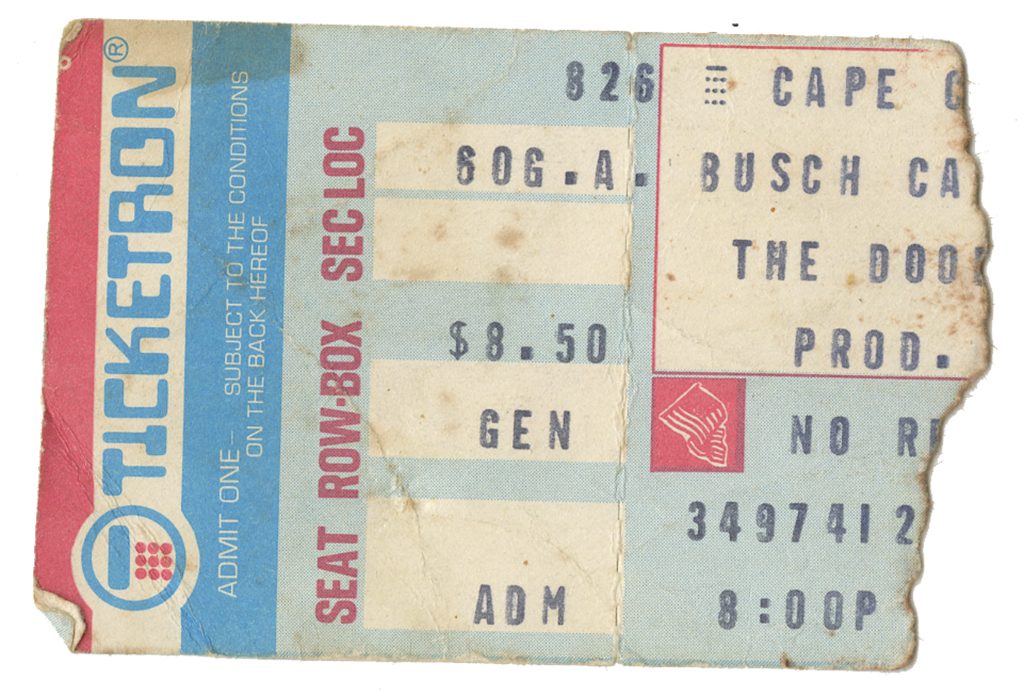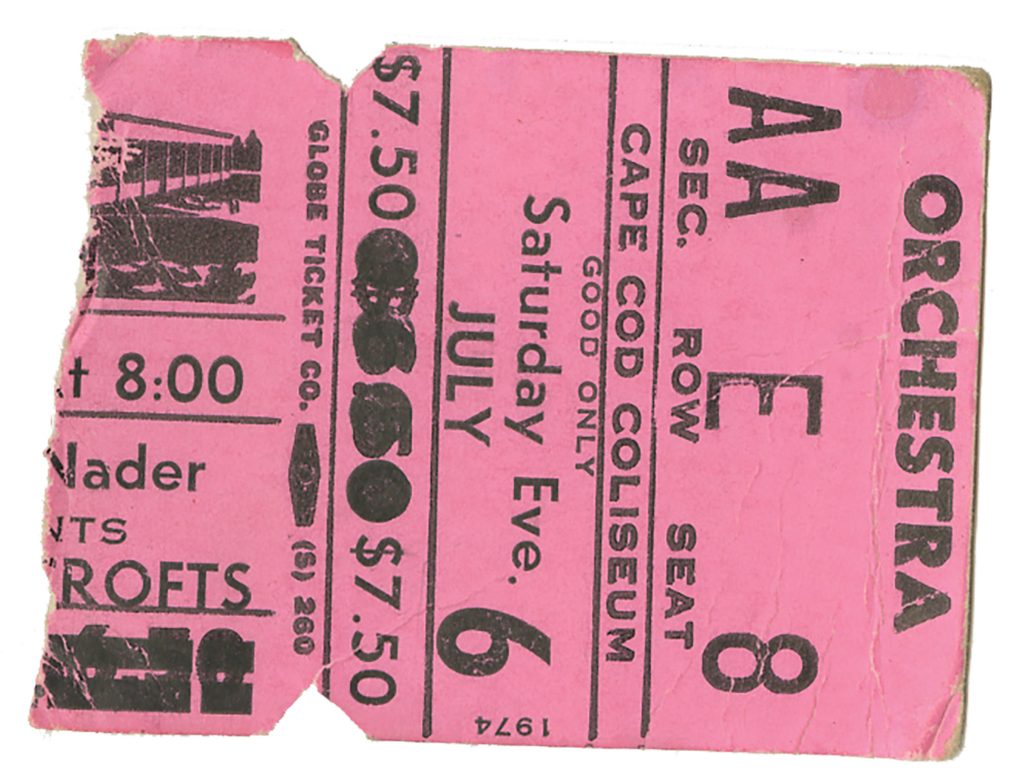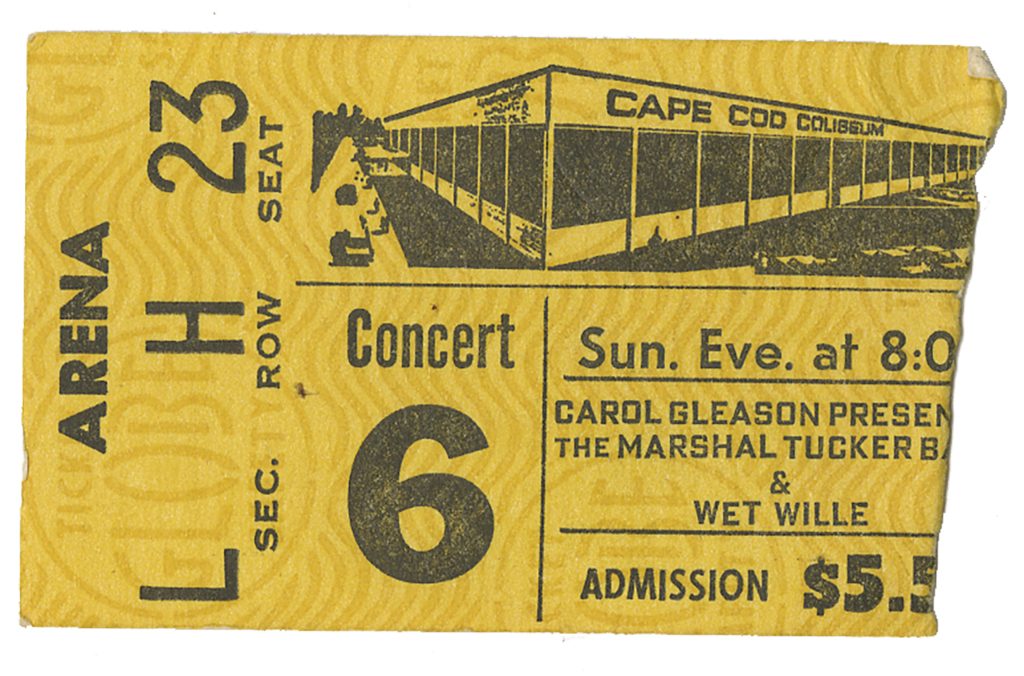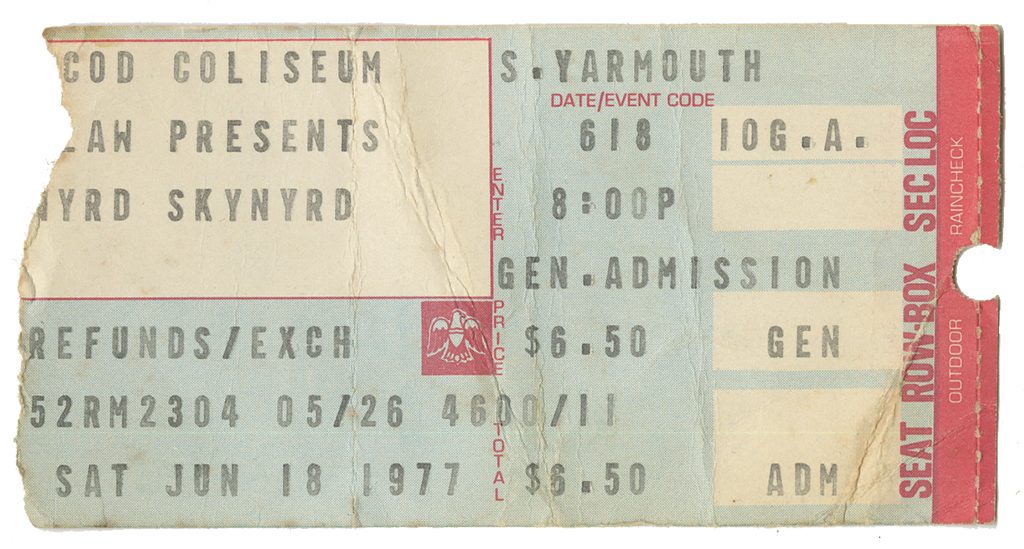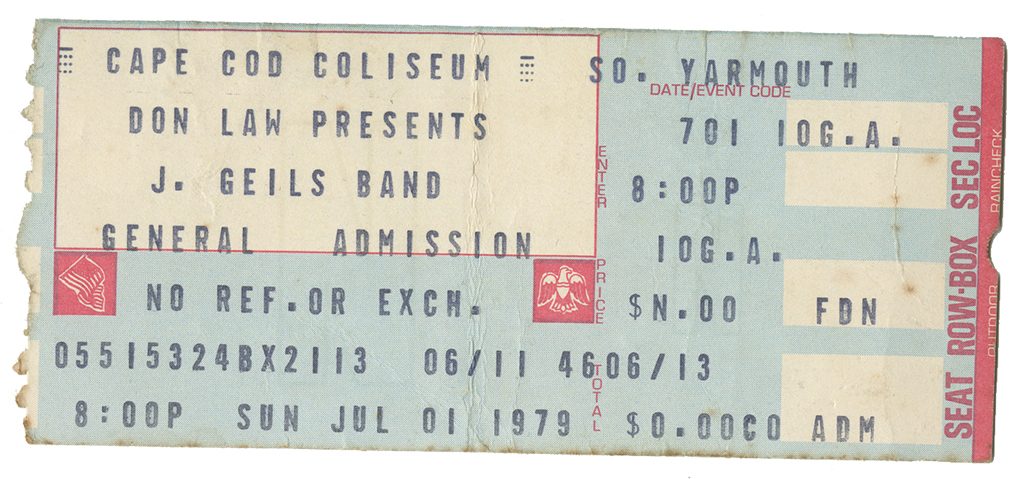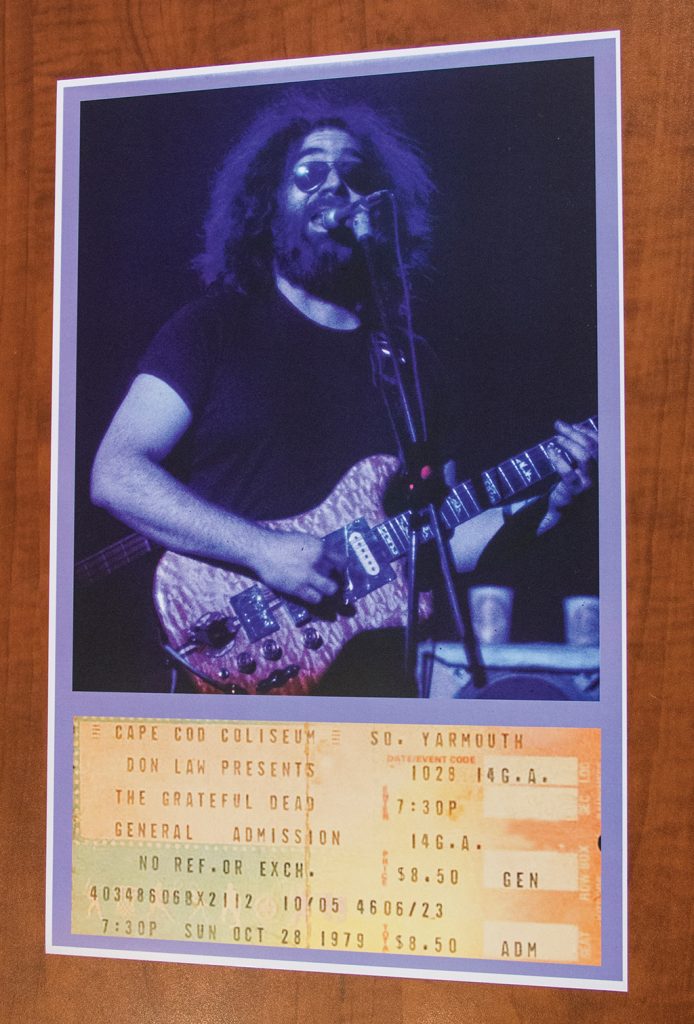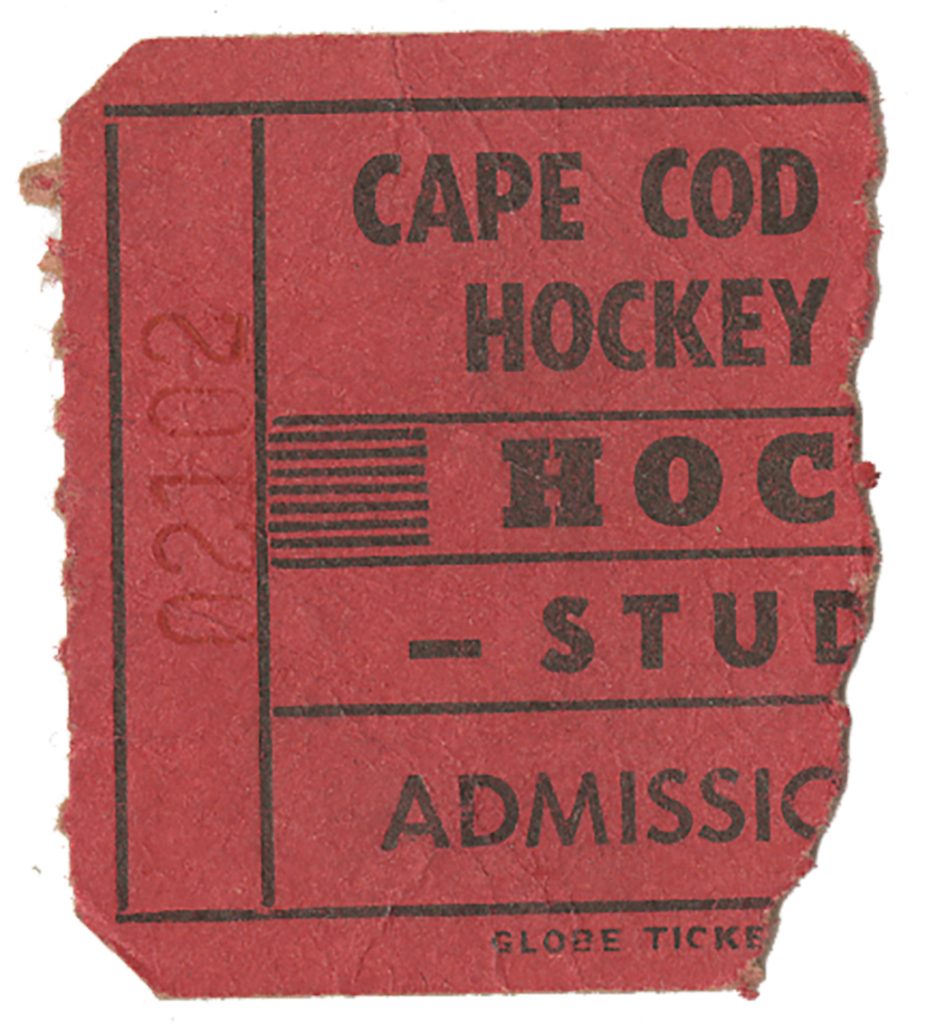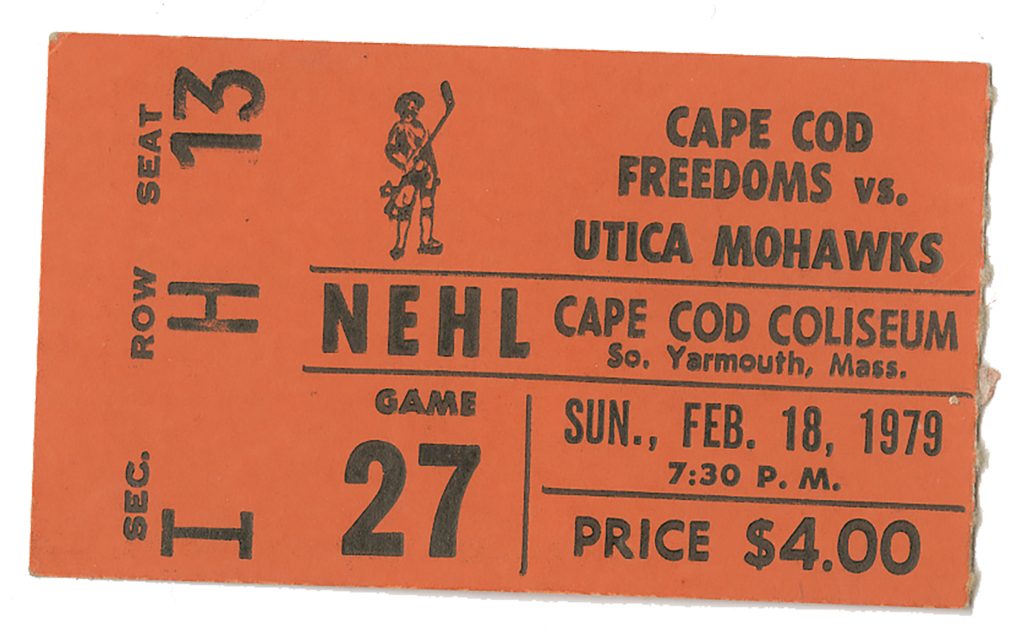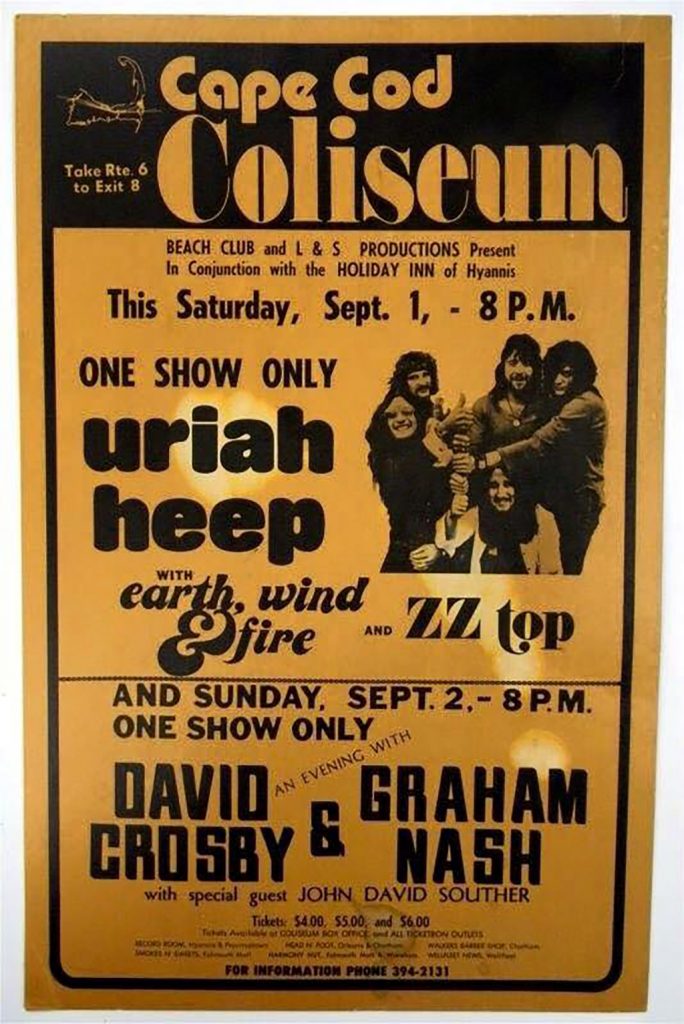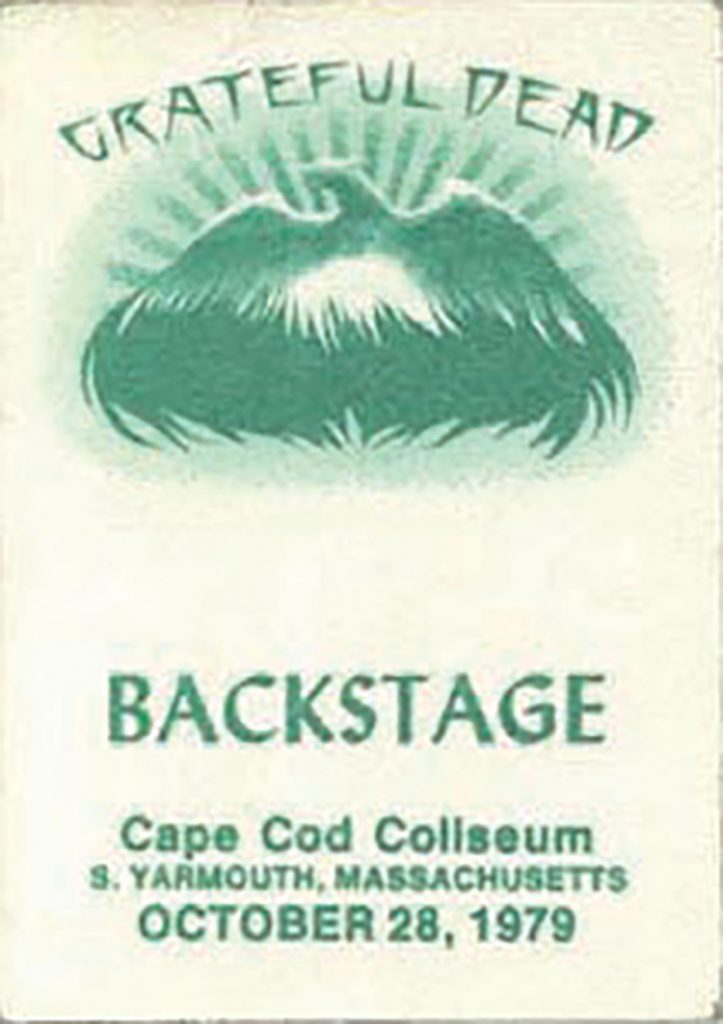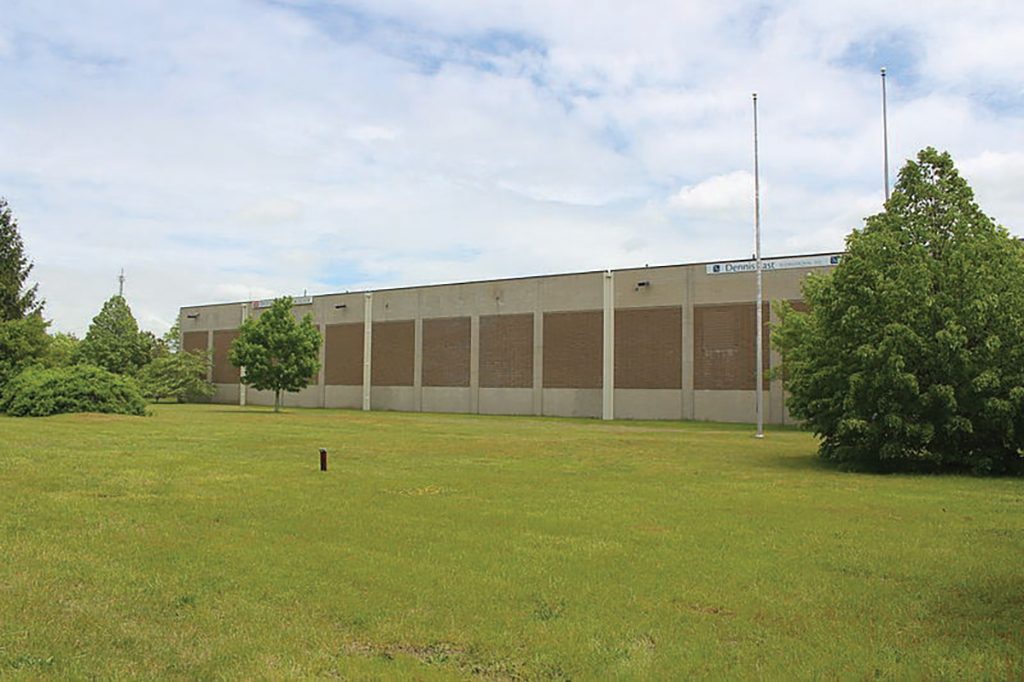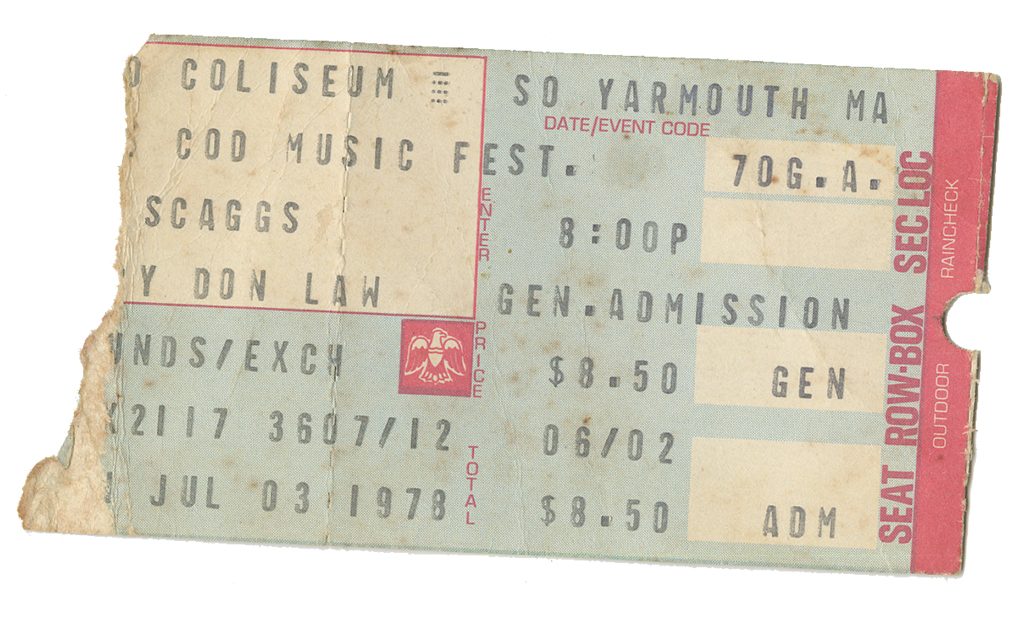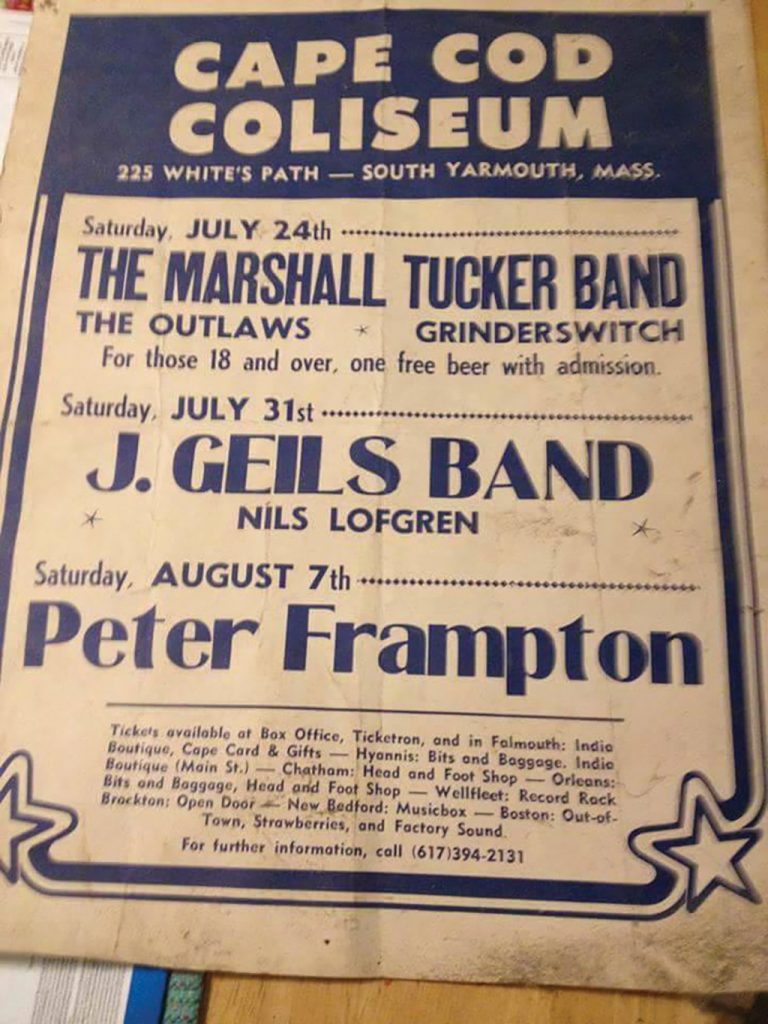
A Mecca of Glaze & Haze: The Cape Cod Coliseum
Cape Cod Life / 2019 Annual / Art & Entertainment, History
Writer: James P. Freeman
A Mecca of Glaze & Haze: The Cape Cod Coliseum

Cape Cod Life / 2019 Annual / Art & Entertainment, History
Writer: James P. Freeman

The Coliseum is a relic of 1970s Cape Cod.
Lost Sailor
“Hear the sea birds cryin’ and there’s a ghost wind blowing
And it’s calling you, to that misty swirling sea
Till the chains of your dreams are broken
No place in this world you can be”
Grateful Dead, 1979
Today, if you close your eyes, you can almost imagine the scene; through the dancing and the sweat-saturated, kaleidoscopic molecules. If you breathe in, you can almost smell the wafts of sweet leaf marijuana languorously competing with clean, salty Atlantic streams. And if you touch the weathered concrete slabs, you can almost feel the rumbling, if not serene, bass vibrations… when the jam band Grateful Dead rolled onto the peninsula for two scintillating shows in late October 1979 at the Cape Cod Coliseum.
Some aging Dead aficionados consider those concerts among the best in the band’s prolific touring career (over 2,300 performances from 1965-1995). The band allowed—if not encouraged—fans to record or bootleg their shows, a virtually unheard of practice in a pre-digital industry that closely guarded copyrighted material. Indeed, those Cape Cod shows are preserved for posterity. Helpful, no doubt, to those concert goers whose collective memories were clouded by jugs of Carlo Rossi red wine, and Panama Red weed.
Listening to those surprisingly pristine recordings now reveals something about Cape Cod then. For a brief period, anyway, the Coliseum was a regional cultural sanctuary in South Yarmouth for the young Me Generation: A refuge from the 1970s itself. Vietnam. Nixon. Watergate. Stagflation. Gas lines. Leisure suits. Three Mile Island. The Iranian Hostage Crisis. Bell-bottoms and belly-tops. Disco and discontent.

Can you dig it?
In retrospect, the Coliseum was a shabby cinder-block edifice nestled between an oasis of scrub pines, bays and sounds—fittingly, an impenetrable safe space from the surrounding adult meritocracy. Forty years ago, the “Old Sweatbox,” as it was known, was a mecca of glaze and haze. It had reached the peak of its popularity in the late seventies when it seemed possible that winter hockey combined with summer concerts could sustain a year-round, multi-purpose arena. And for a while it eclipsed the world-famous Melody Tent in attracting top national talent. But by 1984 its popularity proved perishable.
The wine turned to vinegar. The ice melted. And the smoke faded.
The 46,000-square-foot concrete structure opened in September 1972 (three months after the “third-rate burglary” at Watergate). Owned and operated by local real estate agent William Harrison, the arena cost $1.5 million to build and could seat over 5,000 people for sports and closer to 7,000 for concerts. It was conceived during a time when youth hockey exploded in the greater Boston area due to the success of the Bruins and its young star, Bobby Orr. Everywhere, it seemed, new rinks and amateur leagues sprouted up, Cape Cod among them. The new arena on White’s Path was indeed built for hockey. Ironically, though, hockey was also the Coliseum’s fatal attraction and its original sin.
The Cape Cod Cubs of the Eastern Hockey League became the first—and, some argue, most famous—tenant, debuting during the 1972-73 season. The team’s first official game at the arena occurred—seriously—on Friday the 13th of October 1972 and was broadcast on WCOD radio. Despite early success, trouble was already looming by the second season.
Writing for capecod.com, Chris Setterlund noted that the Cubs were routinely drawing 2,000 people or fewer during its 38 home-game season. “An average crowd of 2,500 or better,” he concluded, “was needed to assure the team of breaking even money-wise.” By the fourth season, the financially challenged Cubs were renamed “Cape Codders” and were playing in the North American Hockey League.

That league was the inspiration behind “Slap Shot.” The 1977 cult-like movie, starring Paul Newman, captured perfectly the violent, grungy, ramshackle aesthetic of the low-level minor leagues. In fact, the Codders became a minor-league affiliate of the New England Whalers and Cleveland Crusaders of the World Hockey Association (WHA). Nevertheless, with insufficient fans and insufferable fate, the team effectively folded on February 13, 1976. A Friday.
In all, 36 out of 121 players who wore the Cubs/Codders uniform would go on to play professionally in the WHA or National Hockey League. Pro hockey returned—like snowbirds in reverse—in late 1978 with the Cape Cod Freedoms of the Northeastern Hockey League. They were gone by spring 1979.
Billboard reported in the summer of 1974 that the Coliseum was the fifth largest facility of its kind in all of New England (after the Boston Garden, Providence Civic Center, New Haven Coliseum and Springfield Civic Center). But even by 1970s standards, it was expensive to maintain. Perennially on the brink of bankruptcy, management needed additional forms of entertainment to finance its operations beyond hockey. What resulted was a remarkably eclectic mash up.
Arthur Fiedler & the Boston Pops, Helen Reddy, Benny Goodman, Earth Wind & Fire, and a 1960s British Rock Invasion revival were the first musical acts to perform in 1973. Count Basie, Chuck Berry and The Beach Boys also paid visits. But it became apparent, rather quickly, that a spartan ice rink in summertime heat was not a suitable venue for soothing musical acoustics or comfortable climate control. (Such inconveniences were conveniently trivial when the playbill attracted more contemporary rock acts.)
Nonetheless, further experimental excursions included boxing, Roller Derby, Sesame Street Live On-Ice, the Harlem Globetrotters, the Boston Lobsters (professional tennis; owned by a young Robert Kraft) and, of course, wrestling.

Enter the impresario. . .
Vince McMahon in the mid-seventies was a young promoter and marketer. Brash and bombastic, he fused 1920s vaudeville kitsch with 1970s sports programming. The tempered alloy forged the World Wrestling Federation. McMahon was an old-school showman but foresaw the coming cable television revolution and its money-making potential. It was at the Coliseum offices that he built the fledgling professional wrestling franchise that became a multi-billion dollar enterprise (World Wrestling Entertainment). He and his wife Linda (one-time U.S. Senate candidate and now Administrator of the Small Business Administration under President Donald Trump) lived on the Cape, and he became the Coliseum’s last owner by decade’s end.
But like his predecessors, McMahon was tempted by the allure of professional hockey, notwithstanding painful evidence of the sport’s failure at the arena. He welcomed the proposition of owning the Cape Cod Buccaneers of the newly formed Atlantic Coast Hockey League in 1981. Professional hockey’s rebirth on the Cape was short lived; the team was shut down during the winter of 1982.
The concrete dungeon and its hodge-podge roster proved too small for a man with big ambitions. So with little fanfare the last event at the arena took place on June 4, 1984, a wrestling card featuring (with skillful irony) Sgt. Slaughter. Shortly thereafter, the McMahons sold the property to Christmas Tree Shops and his empire relocated to Stamford, CT. The structure was tripled in size to accommodate retail merchandise. Today, it still stands as a local warehouse for off-Cape distribution. Defeated yet defiant.
According to the blogspot “Heartpunchwrestling,” McMahon once predicted that an exhibition hockey game featuring the Boston Bruins and Buffalo Sabres in late 1979 would be the “greatest event in the building’s history.” What McMahon got wrong The Boston Globe got right. The paper wrote in May 1984 that “it was the rock stars who were the main event” throughout the Coliseum’s history. And that is true. Rock concerts left the most enduring impressions on youth of that era.

In spite of the bad sound and dreadful steam-bath heat, a who’s-who of 1970s classic rock played at the Coliseum. A sampling includes: Tom Petty, Peter Frampton, KISS, Van Halen, Marshall Tucker, Jackson Browne, Foreigner, Alice Cooper, Doobie Brothers, Aerosmith, and J. Geils Band (which held a record 10 performances).
Matt Reid remembers the sights, sounds, and scents…
Reid, proprietor of Booksmith Musicsmith in Orleans, moved to the Cape permanently in 1974 after spending vacations in South Dennis. For two summers he actually parked cars in the old dirt lot adjacent to the building and saw a number of shows, notably Emerson, Lake and Palmer. He says the atmosphere was “laid back” and “no one got in trouble.” Each concert was reminiscent, he says, of a mini Woodstock, the ’70s version of tailgating with plenty of booze and marijuana emerging from station wagons and vans, and where the attire was decidedly casual—denim, bare feet, and the occasional bikini top. Reid also recalls that local businesses and homeowners despised those events and evenings due to traffic and noise.
Looking back in 2019, it is easier to understand why the Coliseum closed. Professional hockey’s center of gravitational pull moved west (where the New York Islanders and Edmonton Oilers dominated the league in the 1980s). Music changed, too. It went mobile (Sony Walkman) and was embraced by television (MTV). Furthermore, contemporary music acts, like the generation it entertained, went off Cape to new places like Great Woods and Harborlights Pavilion.
By the mid-1980s, live entertainment and sporting events evolved into a model of state-of-the-art production values, where bigger was better. Modern facilities were built in metropolitan hubs to accommodate such needs. Meanwhile, local demographic changes were unfavorable to the Coliseum.
While the Cape’s population was growing, it was also growing older. From 1970 to 1990 the population grew from 96,656 people to 186,605 people; it aged by 5.2 years in the same period. Simultaneously, there were concerns that rapid development on Cape Cod was unsustainable. Quite probably, then, the Coliseum would have not been permitted to expand or refurbish. Besides, it was always more grit and grime than glitz and glamour. The 1984 Sweatbox was frozen in time, a relic from a by-gone era. A remnant of short-lived revelry.
Perhaps most importantly, pop culture also radically changed. The 1970s Me Generation of self-realization and narcissism later gave way to the 1980s Generation X of self-indulgence and materialism. Ever so briefly, though, the old Coliseum bridged those stark generational and cultural divides on Cape Cod. Like the Dead’s lost sailor bridging broken dreams.
A special thank you to JoAnne Cummings Beatty of Hyannis, James Dow of Centerville, Todd Kennelly of Yarmouth Port and Bob Viamari of Yarmouth for their old ticket stubs, posters, photos and memories.


